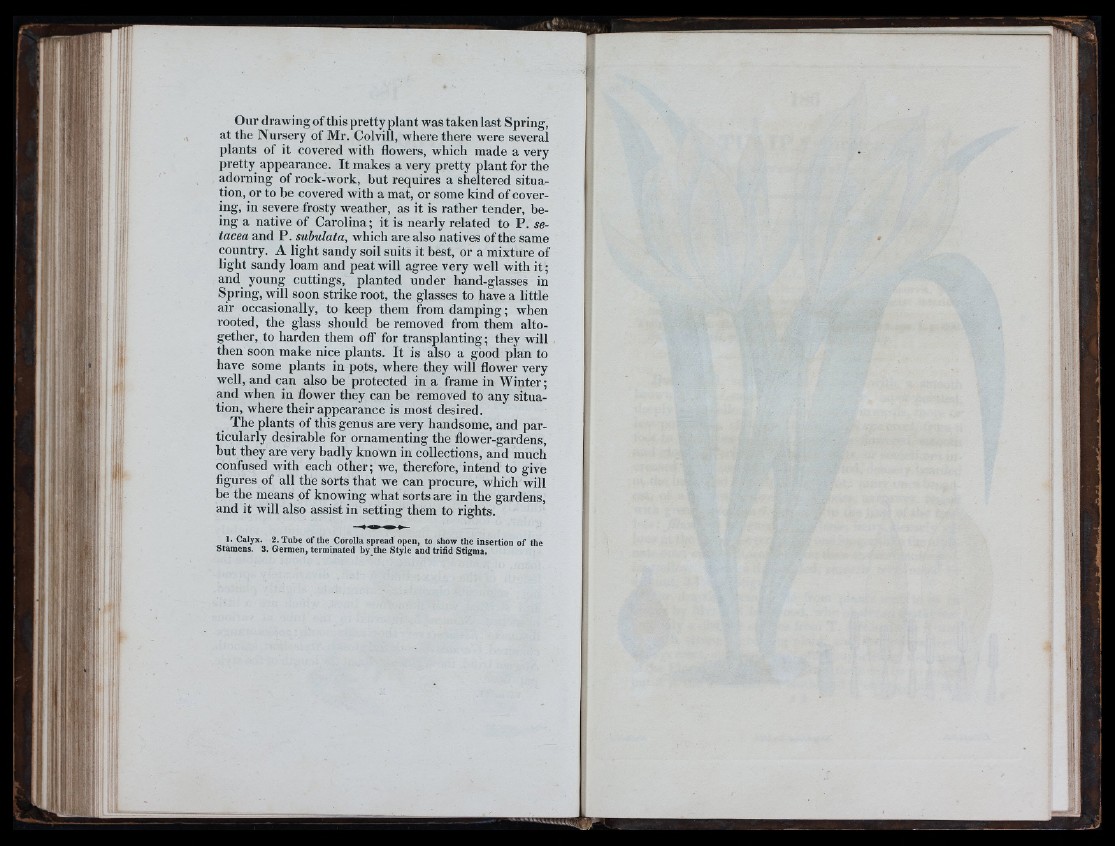
Our drawing of this pretty plant was taken last Spring,
at the Nursery of Mr. Colvill, where there were several
plants of it covered with flowers, which made a very
pretty appearance. It makes a very pretty plant for the
adorning of rock-work, hut requires a sheltered situation,
or to he covered with a mat, or some kind of covering,
in severe frosty weather, as it is rather tender, heing
a native of Carolina; it is nearly related to P. se-
tacea and P. subulata, which are also natives of the same
country. A light sandy soil suits it hest, or a mixture of
light sandy loam and peat will agree very well with i t ;
and young cuttings, planted under hand-glasses in
Spring, will soon strike root, the glasses to have a little
air occasionally, to keep them from damping; when
rooted, the glass should he removed from them altogether,
to harden them off for transplanting; they will
then soon make nice plants. It is also a good plan to
have some plants in pots, where they will flower very
well, and can also he protected in a frame in Winter;
and when in flower they can he removed to any situation,
where their appearance is most desired.
The plants of this genus are very handsome, and particularly
desirable for ornamenting the flower-gardens,
but they are very badly known in collections, and much
confused Avith each other; we, therefore, intend to give
figures of all the sorts that we can procure, which will
be the means of knowing what sorts are in the gardens,
and it will also assist in setting them to rights.
1. Calyx. 2. Tube o f the Corolla spread open, to show the insertion o f the
Stamens. 3. Germen, terminated by the Style and trifid Stigma.